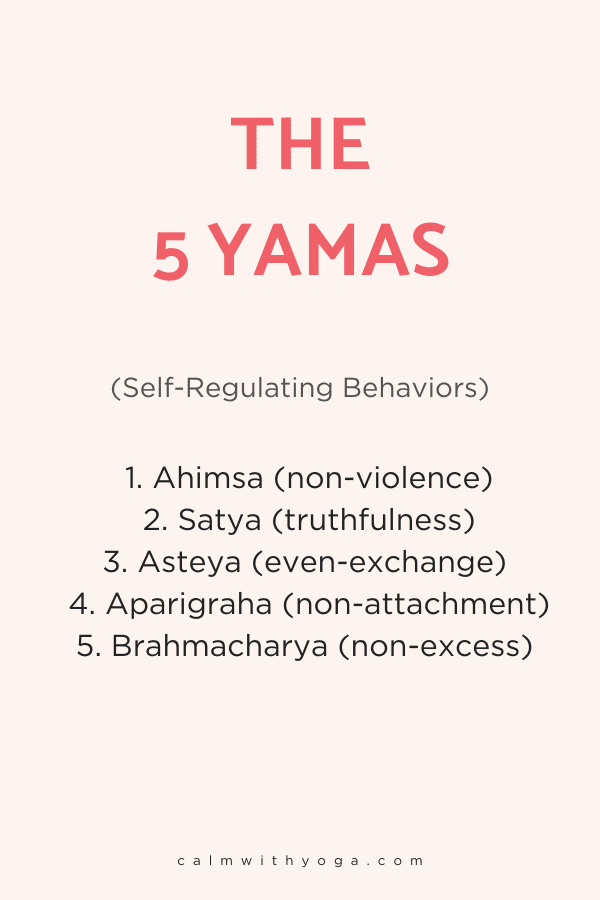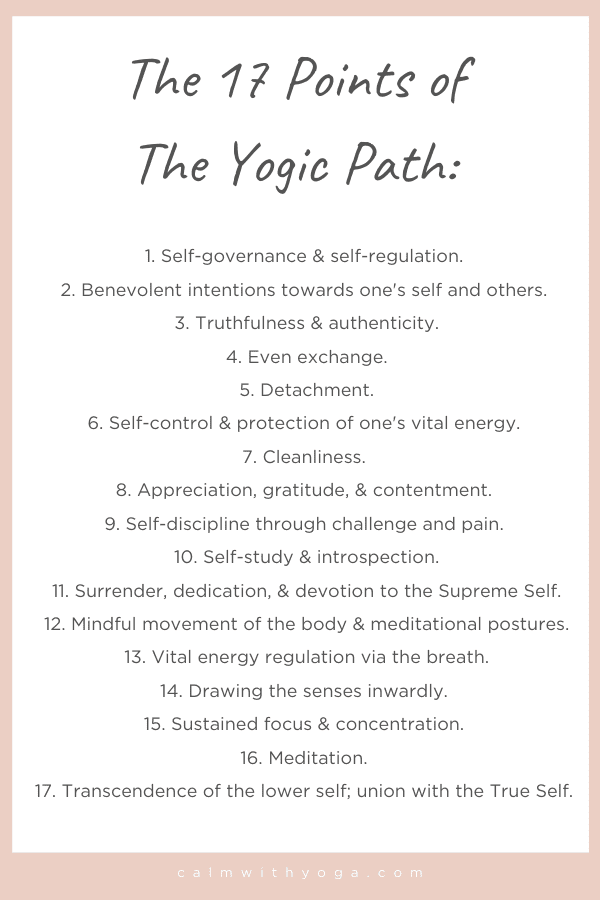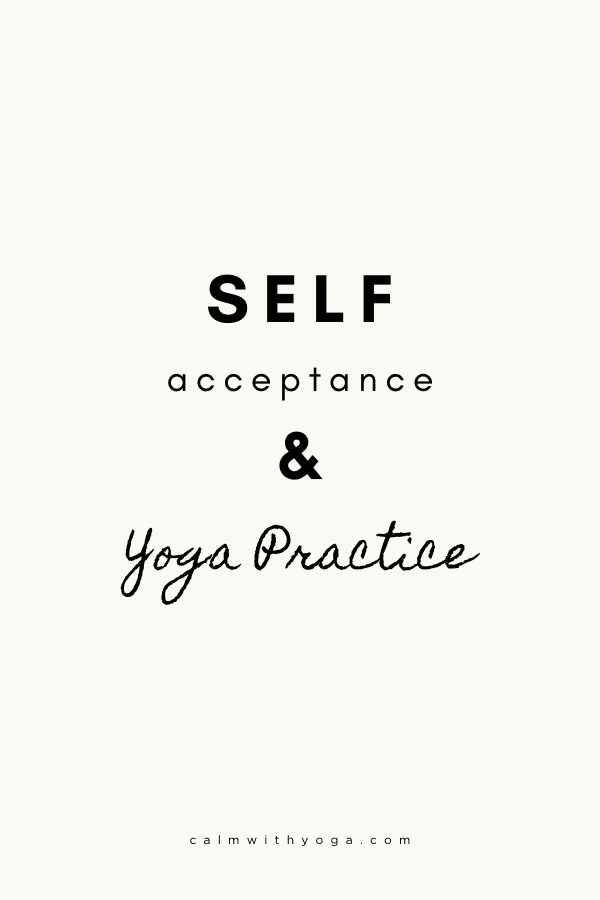There is no need for temples; no need for complicated philosophy. Our own brain, our own heart is our temple; the philosophy is kindness. -His Holiness the Dalai Lama Self-compassion is a muscle that can be developed no matter your history or past. As women, wives, and mothers, we tend to put ourselves last. Our self-care and self-love practices are often an afterthought. And yet, self-compassion is exactly what’s needed to nurture Mom. Our kids don’t learn by what we tell them as much as they learn by what we model to them. The way we treat ourselves and how we talk to ourselves gives them cues about how to treat themselves. As parents and future parents, learning to generate lovingkindness towards ourselves is a duty and a privilege. One way we can start the self-love fest is by practicing the yogic principle of ahimsa. Ahimsa is about non-violence and non-harming. It’s about having good intentions and benevolence towards ourselves.
The Yogic Roots of Self-Compassion
It’s the first step in the practice of true yoga practice and it’s the first of 5 foundational self-regulating behaviors (Yamas):
- Ahimsa (non-violence)
- Satya (truthfulness)
- Asteya (even-exchange, non-stealing)
- Aparigraha (non-attachment)
- Brahmacharya (non-excess) The Yamas are the first of 8 major limbs outlined in Patanjali’s Yoga Sutras – the earliest known system of yoga practice (known as classical yoga) written somewhere around the third century AD. The Yamas (the first limb of yoga) and the Niyamas (the second limb of yoga, personal training) both are considered the backbone of the ethical standards and guidelines for true yoga practice:
- Saucha (cleanliness)
- Santosha (contentment)
- Tapas (self-discipline)
- Svadhyaya (self-study)
- Ishvara Pranidhana (surrender and dedication) Given today’s modern yoga culture, it’s easy to mistake asana (postures) practice for true yoga practice in its entirety (observing all points of the 8-Limbed Path):
But you don’t need to be able to do a handstand to be a yogi, and you don’t need to turn vegan to practice ahimsa.
The practice of ahimsa actually starts within – by directing loving-kindness towards ourselves first.
You can incorporate ahimsa into your daily life by… becoming your own best friend.
How To Be Our Own Best Friend
Have you heard of the saying “as within, so without”? It means that your internal world creates your outer world. So the world will reflect back to you the way you treat yourself internally. Through the daily practice of ahimsa, you can increase your own sense of well-being.
Treating yourself with compassion is powerful.
And while it’s relatively easier to observe this practice of benevolence and non-hatred in relation to others, it tends to be more challenging in relation to ourselves. We can be our biggest critics, judges, and bullies. Think of the beliefs you hold about yourself. The tone of your internal dialogue. How do you speak to yourself? What messages do you send to your body? What thoughts swim around in your mind when you catch your reflection in the mirror? Every time we think “not enough” we unleash a small internal burst of violent energy. But… we can change that pattern. We can change how we relate to ourselves. We can choose to be kinder to ourselves. We can choose to wish ourselves well. We can combat inner violence with heartfelt gratitude. Gratitude is like a muscle, the more you work it the stronger it gets.
A Self-Compassion Practice
Take a moment for yourself – to come home to yourself. It’s time to stop what you’re doing and go inwards. Sit comfortably and upright. Close your eyes and place both hands over your heart or join palms together to form Anjali mudra. Notice whatever sensations are present. Maybe you can sense, hear, or feel the pulse of your heartbeat. See if you can feel the subtle rise and fall of your chest as you inhale and exhale. Follow your inhales and exhales and breathe with full attention and awareness. Engage your lower belly as you inhale so that it expands outwardly and contracts inwardly towards your spine with each exhale. Imagine the palms of your hands radiating warm light into your chest. Picture it penetrating each layer until the light reaches your heart. Feel that for a moment. Stay present with it. Be fully present as you nurture your own heart with your own light. Now begin to direct loving-kindness and good intentions towards yourself. Repeat after me (either out loud or internally):
May I be healthy.
May I find inspiration.
May I love and feel loved.
May I create my own fulfillment.
May I learn from pain.
And again…
May I be healthy.
May I find inspiration.
May I love and feel loved.
May I create my own fulfillment.
May I learn from pain.
And again…
May I be healthy.
May I find inspiration.
May I love and feel loved.
May I create my own fulfillment.
May I learn from pain.
Once more:
May I be healthy.
May I find inspiration.
May I love and feel loved.
May I create my own fulfillment.
May I learn from pain.
And so it is, and so it will be. Sat nam. I am truth. We are truth.




title: “Cultivate Self Compassion Yogic Principle Of Ahimsa Motherhood Community” ShowToc: true date: “2022-12-02” author: “James Fisher”
-Su Santidad, el Dalai Lama. En cualquier clase de yoga o práctica de yoga, si es una actividad fluida y continuada, un yogi o yogui podrá recuperar su energía vital. Un practicante de yoga que conozca las asanas y las ponga en práctica conscientemente, superará cualquier obstáculo que se le presente. El yoga tiene elementos que son indispensables para una mejor vida, los yoga sutra de Patanjali, el hatha yoga, la práctica de ahimsa o nonviolence, el estado de samadhi, solo por mencionar algunas prácticas restaurativas para la mayoría de las personas. Es el primer paso en la práctica del verdadero yoga y es el primero de 5 comportamientos de Yamas o conductas autorreguladas:
Los Yamas son las primeras de las 8 ramas o etapas principales en el Yoga:
Y mientras que es relativamente más fácil observar esta práctica de benevolencia y no odio en relación con los demás, tiende a ser más desafiante en relación con nosotros mismos. Podemos ser nuestro mayor crítico, juez y bully. Piensa en las creencias que tienes sobre ti misma. El tono de tu diálogo interno. ¿Cómo te hablas a ti misma? ¿Qué mensajes envías a tu cuerpo? ¿Qué pensamientos nadan en tu mente cuando ves tu reflejo en el espejo? Cada vez que pensamos que “no es suficiente” desatamos una pequeña explosión interna de energía violenta. Pero… podemos cambiar ese patrón. Podemos cambiar cómo nos relacionamos con nosotras mismas. Podemos elegir ser más amables con nosotras mismas. Podemos optar por desearnos lo mejor. Podemos combatir la violencia interior con sincera gratitud. La gratitud es como un músculo, cuanto más lo trabajas, más fuerte se vuelve.
Práctica de autocompasión Ahimsa:
Tómate un momento para ti, para volver a casa contigo misma. Es hora de detener lo que estás haciendo e ir hacia adentro. Siéntate cómodamente y erguida. Cierra los ojos y coloca ambas manos sobre tu corazón. Nota cualquier sensación que esté presente. Tal vez puedas percibir, oír o sentir el pulso de tu corazón. Mira si puedes sentir el sutil ascenso y descenso de tu pecho mientras inhalas y exhalas. Sigue tus inhalaciones y exhala y respira con total atención y consciencia. Involucra la parte inferior de tu abdomen mientras inhalas, de modo que se expanda hacia afuera y se contraiga hacia adentro hacia tu columna vertebral con cada exhalación. Imagina las palmas de tus manos irradiando una luz cálida en tu pecho. Imagínalo penetrando en cada capa hasta que la luz llegue a tu corazón. Siente eso por un momento. Mantente presente con eso. Mantente completamente presente mientras nutres tu propio corazón con tu propia luz. Ahora, comienza a dirigir la amorosa bondad y las buenas intenciones hacia ti misma. Repite después de mí (en voz alta o internamente):
Que esté saludable.
Que pueda encontrar la inspiración.
Que me ame y me sienta amada.
Que pueda sentirme satisfecha.
Que pueda aprender del dolor.
Y otra vez…
Que esté saludable.
Que pueda encontrar la inspiración.
Que me ame y me sienta amada.
Que pueda sentirme satisfecha.
Que pueda aprender del dolor.
Y otra vez… una vez más:
Que esté saludable.
Que pueda encontrar la inspiración.
Que me ame y me sienta amada.
Que pueda sentirme satisfecha.
Que pueda aprender del dolor.
Y así es, y así será.
Namaste + In La’kech

